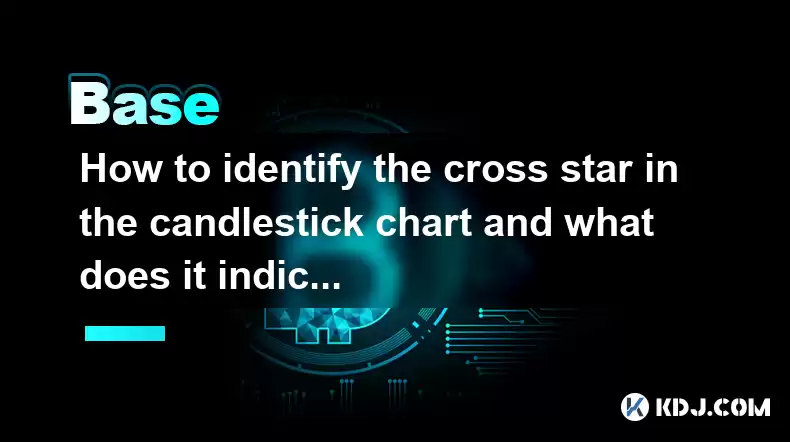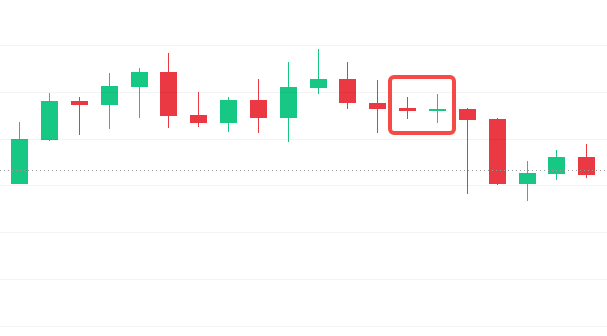-
 Bitcoin
Bitcoin $117300
1.99% -
 Ethereum
Ethereum $3884
5.89% -
 XRP
XRP $3.268
9.33% -
 Tether USDt
Tether USDt $1.000
0.02% -
 BNB
BNB $783.0
1.78% -
 Solana
Solana $173.6
3.51% -
 USDC
USDC $0.9999
0.00% -
 Dogecoin
Dogecoin $0.2193
7.00% -
 TRON
TRON $0.3380
0.30% -
 Cardano
Cardano $0.7769
5.08% -
 Stellar
Stellar $0.4350
9.36% -
 Hyperliquid
Hyperliquid $40.23
5.78% -
 Sui
Sui $3.739
6.95% -
 Chainlink
Chainlink $18.30
9.46% -
 Bitcoin Cash
Bitcoin Cash $581.7
2.11% -
 Hedera
Hedera $0.2577
5.51% -
 Ethena USDe
Ethena USDe $1.001
0.00% -
 Avalanche
Avalanche $23.08
4.23% -
 Litecoin
Litecoin $121.7
2.24% -
 UNUS SED LEO
UNUS SED LEO $8.962
-0.34% -
 Toncoin
Toncoin $3.332
1.36% -
 Shiba Inu
Shiba Inu $0.00001273
3.39% -
 Uniswap
Uniswap $10.35
6.84% -
 Polkadot
Polkadot $3.818
4.01% -
 Dai
Dai $1.000
0.01% -
 Bitget Token
Bitget Token $4.446
2.13% -
 Cronos
Cronos $0.1491
4.96% -
 Monero
Monero $255.4
-9.78% -
 Pepe
Pepe $0.00001099
4.80% -
 Aave
Aave $284.0
8.01%
How to identify the cross star in the candle chart and what does it mean?
The cross star is an important pattern in the K-line chart, indicating that the market may reverse or be hesitant, and combined with other indicators can improve trading accuracy.
Apr 03, 2025 at 02:57 pm

In cryptocurrency trading, the K-line chart is one of the important tools to analyze market trends and price movements. Among them, 'Cross Star' is a common K-line pattern, which is of great significance in analyzing market sentiment and predicting price trends. This article will introduce in detail how to identify the 'cross star' in the K-line chart and what this form indicates.
What is a K-line chart?
A K-line chart, also known as a candle chart, is a financial chart that displays the opening, highest, lowest and closing prices of prices in a specific time period. Each K-line consists of a rectangular body and two upper and lower shadows. The rectangular body represents the price range between the opening price and the closing price, while the upper and lower shadows represent the highest price and the lowest price.
Definition and identification of cross stars
The cross is a special K-line pattern, characterized by the opening price and closing price the same or very close, so the rectangular body of the K-line almost does not exist, forming a cross. The steps to identify a cross star are as follows:
Observe the K-line pattern : On the K-line chart, look for those K-lines with almost the same opening and closing prices. The rectangular body of these K-lines is very small, and may even be just a horizontal line.
Confirm the shadow : The cross star usually has upper and lower shadows, and the length of the shadows can be different. The shadow indicates the range of price fluctuations during this time period.
Verify the opening price and closing price : Ensure that the gap between the opening price and closing price is very small, and the specific value can usually be seen on the trading platform.
Types of cross stars
Cross stars can be divided into several different types, each of which has slightly different meanings in the market:
Long-legged cross star : The upper and lower shadows of this cross star are very long, indicating that the market has experienced large fluctuations during this period of time, but the price eventually returns to near the opening price.
Tombstone cross star : This kind of cross star has no lower shadow, only upper shadow, which usually appears at the top of the market, indicating a possible price decline.
Hammer cross : This kind of cross has no upper shadow, only lower shadow, which usually appears at the bottom of the market, indicating a possible price increase.
Spindle cross : The upper and lower shadow lines of this cross are similar in length, indicating that the market is in a state of hesitation.

The market significance of cross stars
The appearance of cross stars in the market is usually regarded as an important signal, and the specific significance of the foreshadowing depends on the market environment and type of its appearance:
Market Reversal Signal : The cross star is often seen as a signal that the market may reversal. For example, a tombstone cross star that appears in an upward trend may indicate an imminent price decline, while a hammer cross star that appears in a downward trend may indicate an imminent price increase.
Market hesitation : The cross star may also indicate that market participants are hesitant about the current price level and cannot determine the future direction of the price. This usually occurs near important support or resistance levels.
Confirmation requires other indicators : Although the cross star itself is an important signal, in order to improve the accuracy of the analysis, it is usually necessary to confirm it in combination with other technical indicators and market factors. For example, indicators such as trading volume, moving averages, and relative strength index (RSI) can help verify the signal of a cross star.
How to trade with cross stars
In cryptocurrency trading, identifying and utilizing cross stars requires caution and strategy. Here are some practical suggestions:
Wait for confirmation : Do not trade immediately after seeing the cross. Wait for the subsequent K-line to confirm the cross star signal. For example, if a negative line appears after the tombstone cross, it may be a sell signal.
Combined with other indicators : Use other technical indicators to verify the signal of the cross star. For example, if the RSI shows an overbought status and the tombstone cross star appears at this time, the possibility of selling is greater.
Set stop loss and take profit : When trading, set reasonable stop loss and take profit points to control risks. For example, if you buy after the hammer cross, you can set the stop loss below the lowest point of the cross.
Consider the market environment : The signal of a cross star may have different effects in different market environments. For example, in a strong upward trend, the cross may be a temporary adjustment, while in a long-term consolidation period, the cross may herald a breakthrough.
Application of cross star in different time frames
The application of cross stars in different time frames also varies:
Short-term time frame : On a minute or hourly chart, a cross may indicate a short-term price reversal or adjustment. These signals are suitable for short-term traders.
Medium-term time frame : On the daily chart, the cross star may herald the changes in the medium-term market trend. These signals are suitable for mid-term traders.
Long-term time frame : On weekly or monthly charts, the cross star may herald long-term market trend changes. These signals are suitable for long-term investors to exploit.
Disclaimer:info@kdj.com
The information provided is not trading advice. kdj.com does not assume any responsibility for any investments made based on the information provided in this article. Cryptocurrencies are highly volatile and it is highly recommended that you invest with caution after thorough research!
If you believe that the content used on this website infringes your copyright, please contact us immediately (info@kdj.com) and we will delete it promptly.
- Cold Wallet Crypto in 2025: The Future is Now, Ya'll
- 2025-08-08 05:10:13
- MAGACOIN, SOL, and ADA: A Tale of Shifting Tides in Crypto
- 2025-08-08 05:10:13
- SHIB Price, PEPE, and the Memecoin Supercycle: Who Will Reign Supreme?
- 2025-08-08 05:50:12
- Pudgy Penguins Price Prediction: Google Trends & Breakout Signals
- 2025-08-08 05:50:12
- UAE Crypto Regulation: SCA and VARA Unite to Streamline the Future of Digital Assets
- 2025-08-08 05:55:48
- MAGACOIN Finance: The Presale Phenomenon Rocking the Crypto World
- 2025-08-08 05:55:48
Related knowledge

What is the difference between CeFi and DeFi?
Jul 22,2025 at 12:28am
Understanding CeFi and DeFiIn the world of cryptocurrency, CeFi (Centralized Finance) and DeFi (Decentralized Finance) represent two distinct financia...

How to qualify for potential crypto airdrops?
Jul 23,2025 at 06:49am
Understanding What Crypto Airdrops AreCrypto airdrops refer to the distribution of free tokens or coins to a large number of wallet addresses, often u...

What is a crypto "airdrop farmer"?
Jul 24,2025 at 10:22pm
Understanding the Role of a Crypto 'Airdrop Farmer'A crypto 'airdrop farmer' refers to an individual who actively participates in cryptocurrency airdr...

What is the difference between a sidechain and a Layer 2?
Jul 20,2025 at 11:35pm
Understanding the Concept of SidechainsA sidechain is a separate blockchain that runs parallel to the main blockchain, typically the mainnet of a cryp...

What is the Inter-Blockchain Communication Protocol (IBC)?
Jul 19,2025 at 10:43am
Understanding the Inter-Blockchain Communication Protocol (IBC)The Inter-Blockchain Communication Protocol (IBC) is a cross-chain communication protoc...

How does sharding improve scalability?
Jul 20,2025 at 01:21am
Understanding Sharding in BlockchainSharding is a database partitioning technique that is increasingly being adopted in blockchain technology to enhan...

What is the difference between CeFi and DeFi?
Jul 22,2025 at 12:28am
Understanding CeFi and DeFiIn the world of cryptocurrency, CeFi (Centralized Finance) and DeFi (Decentralized Finance) represent two distinct financia...

How to qualify for potential crypto airdrops?
Jul 23,2025 at 06:49am
Understanding What Crypto Airdrops AreCrypto airdrops refer to the distribution of free tokens or coins to a large number of wallet addresses, often u...

What is a crypto "airdrop farmer"?
Jul 24,2025 at 10:22pm
Understanding the Role of a Crypto 'Airdrop Farmer'A crypto 'airdrop farmer' refers to an individual who actively participates in cryptocurrency airdr...

What is the difference between a sidechain and a Layer 2?
Jul 20,2025 at 11:35pm
Understanding the Concept of SidechainsA sidechain is a separate blockchain that runs parallel to the main blockchain, typically the mainnet of a cryp...

What is the Inter-Blockchain Communication Protocol (IBC)?
Jul 19,2025 at 10:43am
Understanding the Inter-Blockchain Communication Protocol (IBC)The Inter-Blockchain Communication Protocol (IBC) is a cross-chain communication protoc...

How does sharding improve scalability?
Jul 20,2025 at 01:21am
Understanding Sharding in BlockchainSharding is a database partitioning technique that is increasingly being adopted in blockchain technology to enhan...
See all articles

























































































